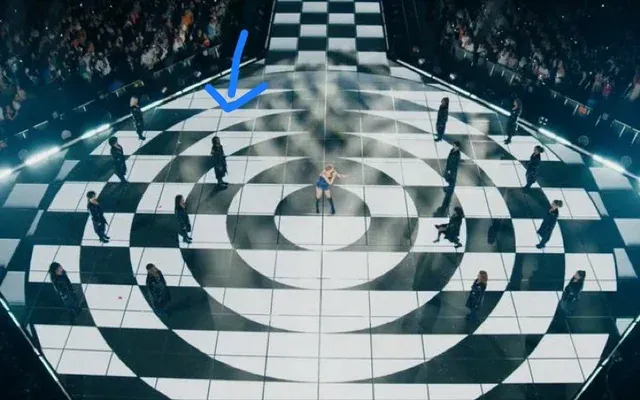The Re-imagined "1989": Her Best Re-Record Yet
These re-recordings offered a look back at the turbulence of young adulthood, infusing the original youthful emotions with fresh perspective and greater nuance

The Re-imagined "1989": An Artistic Triumph
When Taylor Swift announced the re-recording of her previous albums, no one could have predicted the level of excellence she would achieve with the release of "1989 (Taylor's Version)." This work, a cornerstone in the pop genre, already had an illustrious reputation. Yet, Swift managed to elevate it to an even higher plane, leaving both fans and critics astonished. As one critic surmised: Imagine Joni Mitchell opts to re-record "Ladies of the Canyon" during her "Mingus" era — a commendable achievement, to say the least.

The Road So Far: Taylor’s Version Albums
Before delving into the intricate details of "1989 (Taylor's Version)," it's important to take stock of Taylor Swift’s earlier re-releases: "Fearless (Taylor’s Version)," "Speak Now (Taylor’s Version)," and "Red (Taylor’s Version)." These re-recordings offered a look back at the turbulence of young adulthood, infusing the original youthful emotions with fresh perspective and greater nuance. For fans, these albums serve dual purposes: they encapsulate the zeitgeist of their respective eras and mark Swift's reclaiming of her master recordings. This dual achievement underscores the massive success of 'The Eras Tour,' a career-spanning journey that continues to set records. Musically, the re-recorded albums exhibit more polished instrumentals and production values. Swift’s vocal delivery, now suffused with the maturity that comes from experience, has rendered each song with new shades of emotional complexity. Like the others, once again, this is far from a mere redo; it's an intriguing artistic endeavor.
The Highlights: Vault Tracks
The vault tracks in "1989 (Taylor’s Version)" they redefine the work. “Say Don’t Go” co-written with Dianne Warren, echoes the sentiment in the original album's “I Wish You Would,” albeit as a high-powered ballad. The poignancy of the chorus seems destined to be an anthem for large audiences at future 'Eras Tour' concerts.
Diane Warren, the veteran songwriter behind hits such as Aerosmith's "I Don't Want to Miss a Thing" and Cher's "If I Could Turn Back Time," recently discussed her collaboration with Taylor Swift on "Say Don't Go." Among Warren's best songs are "Rhythm of the Night" (1985) and "Don't Turn Around" (1986). Interestingly, Warren questioned why the song didn't appear on the original 1989 album. "Everything has its time, you know? It took a while to see the light of day, but I'm glad it finally did," she explained.

Dianne Warren
Warren, who often writes classic songs independently, described her experience working with Swift as pleasantly surprising. They crafted the song "from scratch," a departure from Warren's usual solo writing style. According to Warren, Swift was "very particular about how she said certain things" while they were crafting the lyrics. This meticulous attention to detail reflects Swift's keen awareness of her audience. Warren expressed admiration for Swift's deep connection with her fanbase, stating, "She’s deeply aware of how her fans want to hear something. I can't explain it, but that's probably why she's the biggest star in the world."
The song itself is a mournful ballad that delves into the painful complexities of a deteriorating relationship. With lyrics like
"Why'd you have to lead me on? / Why'd you have to twist the knife? / Walk away and leave me bleedin', bleedin'? / Why'd you whisper in the dark? / Just to leave me in the night? / Now your silence has me screamin', screamin' / Say, 'Don't go,'"
Taylor encapsulates the essence of a love in disarray. These lines highlight the high emotional stakes, echoing the emotional richness found throughout the re-recorded album. Swift's vocal performance captures both the desperation and despair of the song's subject, thereby adding another authentic layer to the entire album.

Suburban Legends
“Suburban Legends,” another vault track, offers a euphoric sonic journey, with Jack Antonoff’s production conjuring the feeling of a high-stakes arcade game. The line, “You kiss me in a way that’s gonna screw me up forever,” sums it up perfectly — it's an emotional point of no return.
Now That We Don’t Talk and Is It Over Now.
Yet the crown jewels of the vault are “Now That We Don’t Talk” and “Is It Over Now.” The latter had no business hitting this hard. It also acts as a continuation of “Out of the Woods,” featuring evocative lyrics that allude to a snowmobile accident and a famous photograph — both widely presumed to involve Harry Styles. The track is a searing reflection on a disintegrated relationship, replete with barbs and confessions. Lines such as “You search in every model’s bed for something greater,” show a level of resentment rarely heard in the original album.
"Now That We Don’t Talk," on the other hand, is a hypnotic almost disco number. A journey that masterfully blends ‘80s influence with modern storytelling, the track is a euphoric experience. Yet, her vocals, drenched in both nostalgia and a sense of what-could-have-been, reveal the complexities of moving on from relationships and the inherent vulnerabilities in doing so. Its filled with the signature Swiftian wit. The line, “I don’t have to pretend I like acid rock/Or that I’d like to be on a mega yacht/With important men who think important thoughts,” serves as both a critique and a source of endless speculation, who of her exes was into Acid Rock? Does Harry have a personal Spotify playlist we can check?

The Dichotomy of Strength and Fragility
The newly added track "Slut!" serves as a glaring example of the emotional complexities underlying "1989." We all envisioned an empowerment anthem, a veritable banger, this one is actually sadness tinged. While the original album embraced a sky-blue optimism, "Slut!" is a direct confrontation of the scrutiny Swift has faced for her dating life. Amidst cascading synths, she sings, "And if they call me a slut / You know it might be worth it for once." It's a line that embodies both rebellion and vulnerability, adding a depth to the album that was previously unexplored.
Sound Quality: An Unblemished Mirror of Sound
One of the standout qualities of the re-recorded "1989" is its impeccable sound quality. Each instrument, note, and lyric resonates with a clarity that leaves a lasting impression. Tracks like "Clean" and "Wonderland" exemplify this, where Swift's vocals are rendered with exceptional sonic fidelity. This album has become the benchmark among Swift's re-recordings, defining what auditory perfection can sound like.

More Than an '80s Homage
While touted as an ‘80s-inspired synth-pop album, "1989" also stood as a testament to Swift's growth as an artist. Rather than creating a kitschy imitation of her influences, she blended nostalgia with her own contemporary style. As she revealed in a livestream at the time, she woke up "needing to make a new style of music." This led to synthpop hits like "Shake It Off" — a tune so infectious that it remains a pop staple years later.
The Evolution of a Vision
In a way, revisiting "1989" serves as an opportunity for Swift to reflect on her artistic journey. Prior to her ethereal wanderings in albums like "Folklore," Swift's "1989" music videos showed her navigating varied and often turbulent landscapes. From battling the elements in "Out of the Woods" to depicting varying emotional states in other tracks, the visuals accompanying the original album were themselves a journey through emotional and physical realms. The re-recorded version captures this essence while adding a layer of artistic maturity. Swift brings fresh nuances to the table, providing listeners with a version of "1989" that aligns with who she is today.
The Emotional Landscape
The original "1989" is an album that played a significant role in shaping Swift's career and the pop genre as a whole. Its re-recorded iteration captures this emotional weight, while also offering something distinctly current. Swift adds finesse to the album's emotional quotient, be it in the unapologetic assertiveness of "Bad Blood" or the delicate vulnerability of "Wildest Dreams."

Final Thoughts
Taylor Swift's re-recorded "1989" sets a new precedent for what re-imagined art can be. It keeps the integrity of the original work while incorporating fresh elements that show the artist's growth. If one thing is abundantly clear, it’s that Swift has the uncanny ability to make even her best work better, rendering a near-magical listening experience that reaffirms her place in music history. With "1989 (Taylor's Version)," Taylor Swift has not just revisited her past; she has redefined it. Whether you're standing on a beach, dancing in your room, or even lost in the woods, one thing is clear — with "1989 (Taylor's Version)," Swift is once again setting the pace in a race she's already won.



Comments ()